Trelona Compressed Termite Bait: A Comprehensive Guide
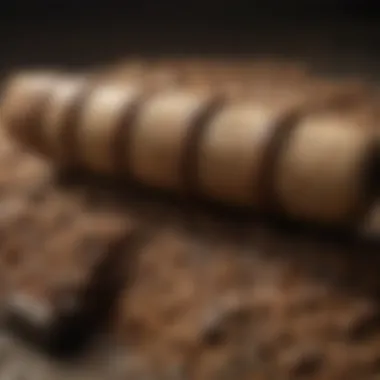
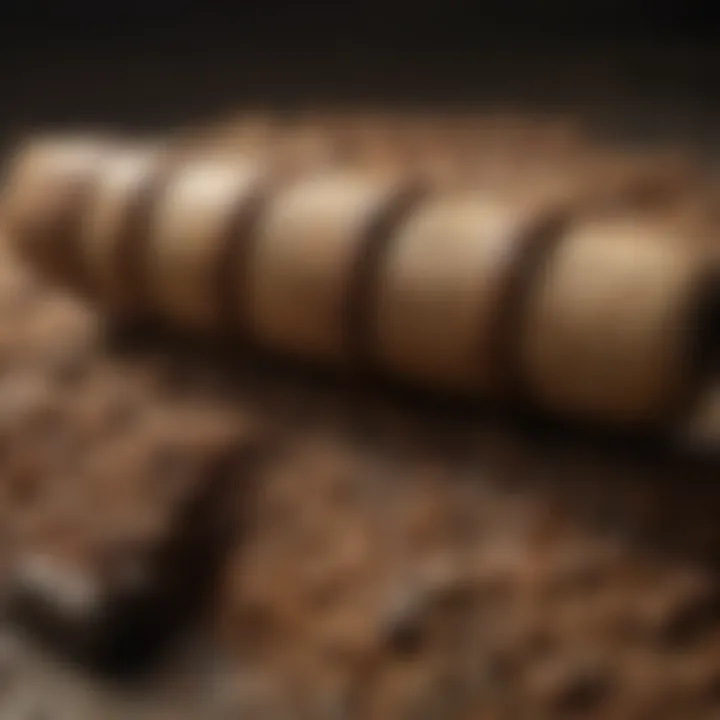
Intro
Termites pose a unique threat to many homes and gardens. Their destructive habits can lead to significant damage and costly repairs. Understanding the complexities of termite behavior is vital in maintaining the integrity of your property. In this guide, we will explore the formulation, effectiveness, applications, and environmental considerations of Trelona compressed termite bait. This pest control solution offers a modern approach to termite management, emphasizing eco-friendly strategies while providing effective deterrents against these pests.
Understanding Pests
Definition of Pests
Pests are organisms that compete with humans for resources and can cause damage or harm. In the context of homes and gardens, pests such as termites can compromise structural integrity and affect the aesthetics of properties. Knowledge of what constitutes a pest is fundamental in developing effective control strategies and minimizing their impact.
Importance of Pest Identification
Correctly identifying pests is essential for targeting control efforts effectively. Proper identification allows homeowners to discern between different pest species, understand their habits, and select the most appropriate methods for management. Ignoring the specific characteristics of a pest can lead to ineffective treatments, wasting time and resources.
Prevention Techniques
Home and Garden Preventative Measures
Preventative measures are the frontline defense against pest infestations. Homeowners can adopt several strategies:
- Maintain a Clean Environment: Regular cleaning reduces the likelihood of attracting pests.
- Control Moisture Levels: Termites thrive in damp environments. Fix leaks and ensure good drainage around the home.
- Seal Entry Points: Check for cracks and gaps in walls, foundations, and around pipes to prevent termite entry.
- Use Appropriate Landscaping: Avoid wood-to-soil contact and use non-receptive materials around the foundation.
Seasonal Prevention Tips
Pest activity varies with seasons. Adjusting prevention strategies accordingly can enhance effectiveness:
- Spring: Inspect for signs of termites after winter. Provide proper ventilation in attics and basements.
- Summer: Monitor moisture levels. Regularly check wood structures and landscaping.
- Fall: Seal any gaps that could provide access before winter sets in. Clear debris from the yard.
- Winter: Maintain records of pest activity during the colder months for future reference.
Eco-Friendly Pest Control Solutions
Overview of Sustainable Practices
Adopting eco-friendly pest control solutions not only protects your home but also preserves the environment. Sustainable practices focus on minimizing chemical usage while effectively managing pests. For example, using Trelona compressed termite bait aligns with eco-friendly goals, reducing chemical exposure and targeting termite populations directly.
Natural Remedies and Their Effectiveness
Householders can explore various natural remedies for pest control. Some options include:
- Diatomaceous Earth: This natural powder can deter termites effectively.
- Neem Oil: Acts as a repellent and may disrupt termite growth.
- Boric Acid: Known for its effectiveness against various pests, including termites, while being less harmful to humans and pets.
The effectiveness of natural remedies often varies by pest type and severity of the infestation.
Understanding these factors helps in devising a comprehensive and informed pest control approach. This guide aims to synthesize information on Trelona compressed termite bait while fostering a deeper understanding of pest management overall.
Prelude to Trelona Compressed Termite Bait
Trelona compressed termite bait represents a sophisticated approach in the realm of pest control, specifically addressing the complex issue of termite infestation. Understanding its importance is crucial not only for effective termite management but also for maintaining structural integrity and property value. With the growing emphasis on environmentally friendly solutions, Trelona offers an innovative alternative in termite treatment, minimizing risks associated with traditional methods.
Understanding Termite Bait Systems
Termite bait systems like Trelona operate on a simple yet effective principle. They lure termites to a bait that contains active ingredients designed to disrupt their growth and behavior. This makes them different from conventional liquid insecticides that focus on immediate kill rather than long-term colony elimination. Bait systems are generally installed in the ground around a property and are monitored for activity. These systems are beneficial as they directly target termites where they feed and congregate, thus potentially eliminating entire colonies.
The bait system works through a network of bait stations. Each station contains the bait, which is formulated to be desirable to termites. Once they ingest it, the effects spread throughout the colony. This targeted approach means that fewer chemicals are needed, which not only reduces environmental impact but also lessens exposure to non-target insects and wildlife.
The Significance of Effective Termite Control
Effective termite control is vital for several reasons. First, termites can cause significant structural damage to homes and buildings. The National Pest Management Association notes that termites cause billions of dollars in property damage each year in the United States alone. In many cases, this damage is not covered by standard homeowners' insurance policies, amplifying the need for proactive measures.
Second, with increasing awareness of environmental issues, there is a keen interest in pest control methods that minimize harmful effects on ecosystems. Trelona's bait system provides an alternative by using a more precise application of active ingredients, thus safeguarding beneficial insects and local wildlife. Overall, effective termite management aligns with common values of sustainability, safety, and long-term property care, making it an essential consideration for homeowners.
Composition of Trelona Bait
The composition of Trelona compressed termite bait is a critical topic in understanding its overall effectiveness as a pest control solution. A comprehensive knowledge of its formulation reveals how it effectively targets termite colonies, contributing to successful management strategies. This section will explore the active ingredients that comprise Trelona bait, as well as its innovative compressed formulation that sets it apart from other termite management solutions.
Active Ingredients Explained
Trelona bait contains specific active ingredients designed to disrupt the growth and reproduction of termites. The primary component is noviflumuron. This ingredient is classified as an insect growth regulator (IGR). It works by inhibiting the production of chitin, a critical substance in the exoskeleton of insects. Without chitin, termites cannot molt properly, which is essential for their growth and development.
Additionally, the bait has a carbohydrate source that attracts termites. This sugary attractant not only lures them but also encourages them to consume the bait. Understanding the balance of these components is essential for homeowners and pest management professionals alike. It is this targeted approach to termite control that makes Trelona bait effective.
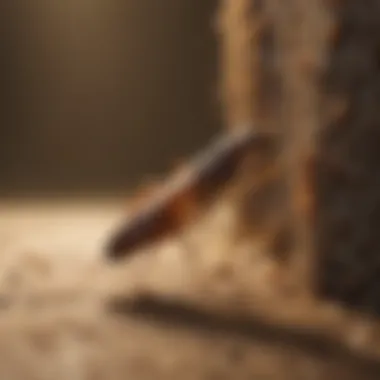

Innovative Compressed Formulation
The compressed formulation of Trelona bait represents a significant advancement in termite management. Unlike traditional bait systems that use granular substances, the compressed bait offers a denser and more efficient delivery method. The bait is compact and designed to withstand environmental factors. This minimizes degradation from moisture or other elements, ensuring that it remains effective over time.
Moreover, the density of Trelona bait allows for precision in placement, offering a more targeted approach to baiting. When installed around the property, it can be placed in strategic locations to maximize the likelihood of termite exposure. The innovation of this compressed formulation enhances its attractiveness, permitting greater consumption rates by termites and resulting in a more effective pest control solution.
Understanding these elements is vital for homeowners aiming to protect their property from the damaging effects of termite infestations. Trelona's unique composition not only offers effective control but aligns well with environmental considerations in pest management.
Mechanism of Action
Understanding the mechanism of action of Trelona compressed termite bait is critical to grasping how it effectively disrupts termite colonies. This knowledge sheds light on the innovative approach to pest management that Trelona embodies. By examining the bait's function, homeowners and pest control specialists can appreciate its advantages over traditional treatments.
How Bait Disruption Affects Termite Colonies
The primary mechanism by which Trelona operates is through bait disruption within termite colonies. When termites consume the bait, the active ingredients disrupt their normal behavior and physiology. This affects their ability to communicate and coordinate with colony members. As a result, it leads to disarray within the colony. The bait acts as a slow-acting insecticide, allowing the affected termites to return to the nest, where they spread the toxicant to other colony members through grooming and feeding behaviors.
This property of the bait is crucial, because it ensures not only the individual termination of initial feeders but also impacts the entire colony. As termites die off naturally, the depletion of the colony is facilitated. Importantly, because it works slowly, there is a window for termites to transfer the harmful agents to others before succumbing.
Behavioral Attraction and Ingestion Patterns
Behavioral attraction is another vital aspect that defines the success of Trelona bait. The bait is designed to mimic the natural food sources of termites. This attracts them effectively. The compounded formulation makes it palatable for various species of termites. Once the bait is approached, the unique ingredients foster a high ingestion rate, which is necessary to maximize the impact.
Termites exhibit specific ingestion patterns that can be exploited in bait systems like Trelona. They tend to consume food items mainly during nocturnal hours. Understanding these feeding habits can assist in strategizing bait placement. Timely monitoring of the bait stations can also enhance efficacacy. On observing increased activity around the bait, adjustments in management practices can be executed promptly to boost results.
Advantages of Trelona Compressed Termite Bait
The implementation of Trelona Compressed Termite Bait offers numerous benefits in pest management strategies. Understanding these advantages is crucial for homeowners who seek effective and sustainable solutions against termite infestations. Trelona provides a multifaceted approach to termite control that prioritizes not only efficacy but also environmental safety and user-friendliness.
Reduced Environmental Impact
Trelona's design incorporates environmentally responsible practices. It utilizes a compressed formulation that minimizes the need for harsh chemicals. Traditional termite treatments often involve high volumes of chemical applications, which can leach into the soil and affect surrounding ecosystems. In contrast, Trelona's baiting system targets termites specifically, significantly lowering the ecological footprint.
By using Trelona, homeowners can minimize risks associated with chemical exposure. This makes the solution more aligned with eco-friendly practices. The bait is designed to break down naturally, reducing waste and leaving less impact on soil health.
Safety for Non-Target Species
One of the key advantages of Trelona Compressed Termite Bait is its safety for non-target species. Unlike broad-spectrum pesticides that can harm beneficial insects and mammals, Trelona targets only subterranean termites. As a result, pets and other beneficial wildlife remain unaffected.
This specificity is essential for maintaining a balanced ecosystem. Households using Trelona can rest assured that their choices will not inadvertently harm pollinators or other essential organisms. This is a significant consideration for environmentally aware homeowners.
"The safety of non-target species is a critical factor in the effectiveness of any pest management strategy."
Efficacy in Various Settings
Trelona Compressed Termite Bait is versatile in its application, catering to various residential environments. The bait system performs well in different climates and soil types, making it suitable for diverse geographical locations. Homeowners can use Trelona in both urban and rural settings without compromising its effectiveness.
Moreover, its installation does not require any extensive modifications to a property. The bait stations can be discreetly placed around a home, maintaining aesthetics while ensuring robust termite protection. This flexibility is vital for those looking to integrate pest management seamlessly into their property routines.
In summary, the advantages of Trelona Compressed Termite Bait extend beyond mere effectiveness. They encompass environmental sensitivity, safety for non-target species, and operational versatility. These considerations validate Trelona as a preferred choice for modern pest control.
Installation and Maintenance
The installation and maintenance of Trelona compressed termite bait are critical to achieving long-term efficacy in termite management. Proper implementation can maximize the bait's effectiveness and ensure that it remains viable against termite threats. A systematic approach is essential for maintaining the integrity and performance of the bait system.
Best Practices for Bait Placement
Bait placement is a fundamental aspect of termite control using Trelona. Here are several best practices homeowners should consider:
- Location Selection: Identify areas around the home that are at higher risk for termite activity, such as foundations, wooden structures, and moisture-prone regions. Areas with visible signs of infestation should also be prioritized.
- Distance from Structures: Install bait stations at appropriate distances from the house. This typically ranges from 10 to 25 feet, depending on local guidelines and the specific environment.
- Depth Placement: Subsurface placement is often recommended. Ensure that bait stations are buried a few inches below the ground to protect them from weather elements and to make them accessible to termites.
- Avoiding Interference: Keep bait stations away from vegetation, landscaping, and debris that can obstruct termite access or hinder monitoring efforts.
- Number of Stations: Evaluate the need for multiple bait stations based on the extent of the termite threat. Increased numbers can offer a greater chance of interception.
- Regular Checks: After installation, check stations regularly to assess bait consumption and overall health of the system.
Implementing these practices will lead to more effective baiting and better management of termite populations.
Regular Monitoring and Management
Monitoring and management are essential for long-term success with Trelona bait systems. Continual vigilance can help detect any issues before they escalate. Here’s what homeowners should focus on:
- Schedule Inspections: Regularly inspect bait stations, ideally every few weeks during the first few months after installation and then quarterly thereafter. This routine ensures that any changes in bait consumption or termite activity can be identified quickly.
- Document Findings: Keep a detailed log of inspection outcomes, noting any signs of activity or abnormalities. Record bait levels, activity levels, and any increases in interest from termites provides valuable data for adjusting strategies.
- Adjusting Bait Levels: If bait consumption is noted to be unusually high or low, consider adjusting the amount of bait in the stations. Too little may not appeal to the termites, while excessive bait may result in wastage.
- Environmental Considerations: Pay attention to environmental changes that may affect termite behaviors, such as changes in moisture levels, temperature, or landscape alterations near the structures. Adjust placement and baiting strategies accordingly.
"Monitoring is an ongoing commitment. It assists not only in pest control but also in understanding the ecological dynamics at play."
By following these strategies of installation and regular management, homeowners can maintain an effective termite management system using Trelona compressed termite bait. This diligence ensures that the bait remains a viable and effective solution against termite infestations.
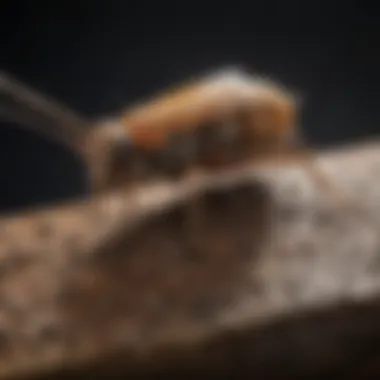
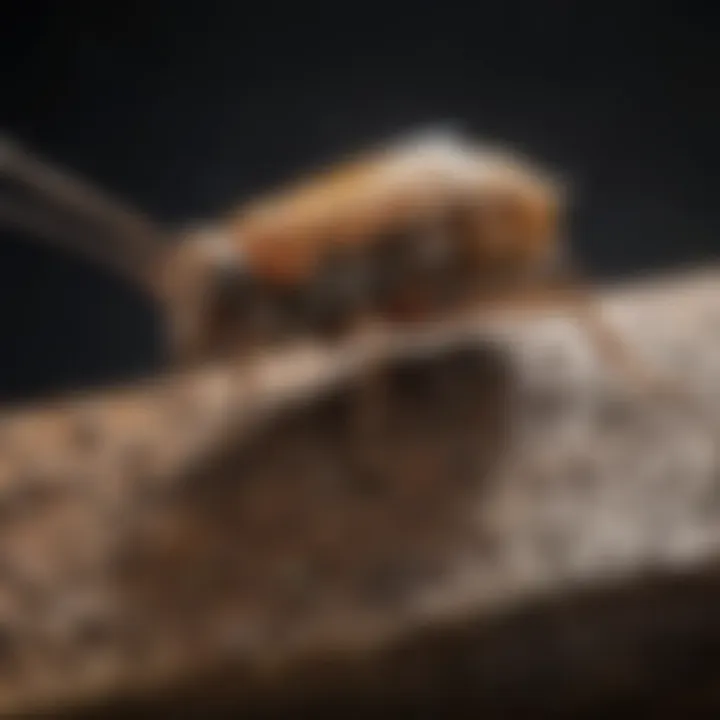
Comparison to Traditional Termite Treatments
In the realm of pest control, comparing Trelona Compressed Termite Bait to traditional termite treatment options is essential for homeowners. Understanding the contrasting approaches not only highlights the advancements in pest management but also provides users with informed choices. Various methods exist for combating termite infestations, and each has its own set of advantages and disadvantages.
Chemical Treatments vs. Bait Systems
Chemical treatments often involve the application of liquid insecticides into the soil around a structure. These treatments create a chemical barrier that aims to repel or kill termites upon contact. However, this method relies heavily on the thoroughness of the application. Any gaps or misapplications can leave a structure vulnerable.
On the other hand, bait systems like Trelona utilize a different approach. They attract termites to feed on the bait, which disrupts their colony and reproductive capabilities. This passive method targets the problem at its source, allowing for more effective long-term control. Bait systems are also less invasive than chemical treatments, requiring fewer direct applications of harmful substances into the environment.
Here are some critical differences between chemical treatments and bait systems:
- Targeted Action: Bait systems focus on the termites themselves rather than applying a broad chemical blanket.
- Lower Environmental Impact: Bait systems minimize the exposure of chemical pesticides to the surroundings, thereby reducing ecological risks.
- Sustained Efficacy: With Trelona, the bait continues to work effectively even after initial exposure, which can potentially lead to colony elimination.
Cost-Effectiveness Analysis
Cost is always a significant consideration in pest management. Traditional chemical treatments usually incur higher upfront costs due to the extensive application process. In some cases, repeated treatments may be required if the infestation persists or is not sufficiently controlled.
In contrast, Trelona Compressed Termite Bait may appear to have similar initial costs but can prove more economical over time. The durability and effectiveness of the bait can lead to fewer applications and less overall expenditure for homeowners. Evaluating the following factors can help establish a clearer cost-benefit analysis:
- Initial Installation Costs: Consider the one-time installation costs of bait systems vs. repeated chemical treatments.
- Maintenance and Monitoring: Ongoing monitoring of bait systems can sometimes provide insights into early infestations, allowing for proactive responses.
- Longevity of Protection: Bait systems like Trelona often provide more extended protection against termites, thereby reducing the need for continuous spending.
In summary, comparisons between Trelona Compressed Termite Bait and traditional treatments showcase the evolution of pest control systems. This understanding is paramount for homeowners seeking effective and sustainable solutions against termite threats.
Case Studies and Efficacy Evidence
In pest management, real-world applications and empirical data play a significant role in understanding the effectiveness of any product, including Trelona compressed termite bait. Case studies and statistical evidence serve to validate claims about the bait's performance and showcase its practical utility in diverse settings. This section delves into the real-world applications of Trelona bait and examines statistical outcomes in termite management, which together provide valuable insights for homeowners considering this approach.
Real-World Applications of Trelona Bait
Trelona bait has been utilized in various scenarios that demonstrate its adaptability to different environments and termite species. In residential areas, homeowners faced the challenge of drywood and subterranean termites. After installing Trelona bait systems, many reported significant reductions in termite activity. The bait's formulation allows it to operate effectively in both soil and wood, making it suitable for a range of structures such as homes and commercial buildings.
Case studies from pest control professionals highlight successful implementations where Trelona bait effectively eradicated termite colonies. For example, in a study conducted in several suburban neighborhoods, Trelona was placed in strategic locations around foundations and near wooden structures. Observations indicated that termite populations decreased dramatically within months, nearing complete elimination over a span of a year.
"Innovative pest management solutions like Trelona represent a shift towards more eco-friendly approaches, while still being effective."
Homeowners also appreciate the long-term prevention capabilities offered by the bait. Unlike traditional chemical treatments that may require regular application, Trelona's slow-acting formulation promotes prolonged exposure for termites. This distinct mechanism helps ensure a more thorough control of infestations over time.
Statistical Outcomes in Termite Management
Statistical data is crucial when evaluating the efficacy of Trelona compressed termite bait. Numerous studies have documented the performance of Trelona in comparison to conventional termite treatments. For instance, research conducted in urban environments has shown that Trelona bait can achieve up to 90% reduction in termite activity within six months of installation.
Surveys conducted with pest control professionals reveal that nearly 80% of technicians reported favorable outcomes when using Trelona against established termite populations. These statistics indicate not only the bait's effectiveness but also its acceptance among industry practitioners. The long-term effectiveness of the bait is further supported by data that shows a minimal incidence of re-infestation in treated areas after a comprehensive baiting strategy.
Environmental and Safety Considerations
Addressing environmental and safety considerations in pest control is essential in today’s context. The use of Trelona Compressed Termite Bait carries implications not only for the targeted pests but also for the broader ecosystem. Understanding these impacts helps homeowners and professionals alike make informed decisions.
Impact on Local Ecosystems
Trelona compressed termite bait presents several advantages when it comes to safeguarding local ecosystems. The bait formulation is designed to minimize the disturbance of non-target species. Unlike traditional treatments that may employ broad-spectrum pesticides, Trelona targets specific termite behaviors and biology. This selectivity is crucial as it helps protect beneficial insects and other wildlife.
Furthermore, the bait is placed underground or in designated bait stations, limiting its exposure to surrounding vegetation. This localized application reduces the risk of chemical runoff into water sources and redirects the potential harm away from native flora and fauna.
Some notable aspects of Trelona's environmental footprint include:
- Reduced Chemical Usage: By attracting termites to a specific bait, less pesticide is needed.
- Long-Term Efficacy: Lower amounts of active ingredients mean less frequent applications, ultimately benefiting the environment.
- Minimized Impact on Soil Health: Trelona does not disrupt the soil ecosystem like liquid chemical treatments can.
Regulatory Compliance and Standards
Ensuring that pest control methods comply with relevant regulations is vital. Trelona compressed termite bait meets or exceeds the standards set by governing bodies overseeing pesticide use. These regulations are intended to protect human health and the environment.
Some of the key regulatory aspects regarding Trelona include:
- EPA Registration: The U.S. Environmental Protection Agency thoroughly evaluates products like Trelona before allowing its market entry. This includes assessments of environmental risk and safety.
- State Regulations: Local laws may have additional stipulations regarding the use of termite baits. These can influence where and how products can be applied.
- Sustainable Practices: Compliance also extends to guidelines promoting integrated pest management (IPM) that prioritize environmentally friendly strategies.
The adherence to regulatory standards not only endorses Trelona's safety but also highlights its commitment to responsible pest management. Homeowners can feel more secure in using a product that aligns with legal and safety guidelines.
"Using products like Trelona that prioritize safety and environmental responsibility is essential for a sustainable future."
In summary, environmental considerations surrounding Trelona combined with regulatory compliance make it a strategic choice for homeowners interested in reducing pest populations without harming local ecosystems.

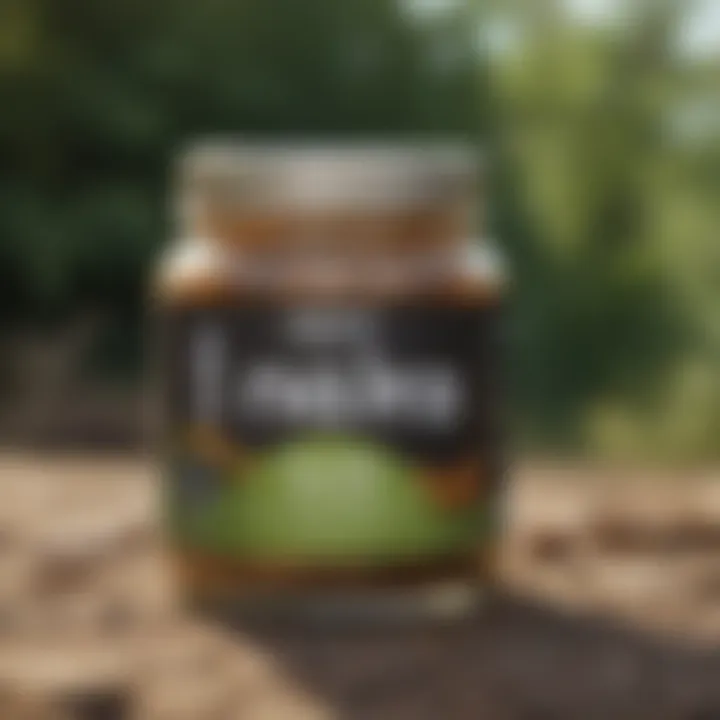
Limitations and Challenges
Understanding the limitations and challenges of Trelona compressed termite bait is crucial for homeowners looking to implement effective pest management strategies. While Trelona has several advantages, recognizing its restrictions is important for optimizing its use and understanding its role in broader insect control efforts.
Factors Limiting Efficacy
There are several factors that can limit the effectiveness of Trelona compressed termite bait. One major factor is the environmental conditions surrounding the bait placement. Temperature and moisture can greatly affect how toxins are released and absorbed by termites. If the bait is too dry or exposed to extreme temperatures, it may not work as intended.
Another limitation is related to the behavior of termite colonies. Termites are social insects that function within a complex hierarchy. If bait is not placed strategically, it may go unnoticed by the worker termites who are responsible for feeding the colony. Therefore, proper placement is important for ensuring the bait is discovered and consumed effectively by the pests.
Resistance Development in Termite Populations
Understanding how resistance develops in termite populations is vital. Over time, constant exposure to similar active ingredients can lead to resistance. This means that the effectiveness of Trelona may decrease as some termites adapt and become less susceptible to the bait.
Regularly assessing the termite population and alternating strategies can help manage resistance. This can drive the continued effectiveness of Trelona in the face of changing pest behavior. Homeowners should integrate Trelona with other forms of pest management to maintain a balanced approach against termite infestations.
Maintaining a multifaceted approach is necessary to address termite resistance effectively. Continuous evaluation of pest behavior plays a key role in pest management strategies.
Best Practices for Homeowners
Effective termite management is crucial for homeowners. Understanding how to integrate Trelona compressed termite bait into a comprehensive pest management plan can enhance the safety and longevity of your home. This section outlines best practices that are essential in maximizing the effectiveness of Trelona bait, while also considering the unique needs of households.
Integrating Trelona into a Comprehensive Pest Management Plan
Integrating Trelona bait into your pest management plan involves a holistic view of potential pest issues. Effective integration means more than just placing bait in strategic locations. It encompasses understanding your home’s environment and how termites may be accessing it. Regular inspections are vital, as they help identify vulnerabilities such as cracks in foundations or damp areas that attract termites.
Furthermore, it is important to pair Trelona bait with other preventative measures. Homeowners should eliminate wood-to-soil contact, repair leaks, and ensure proper drainage. By combining these strategies, you create barriers that deter termites from infesting your property. Remember that termite bait systems work best when they complement other forms of pest control.
Use Trelona bait in conjunction with proper home maintenance for optimal results.
Seasonal Considerations for Application
Seasonal changes affect termite behavior, thus impacting when to apply Trelona bait. Termites are more active during warmer months. Therefore, spring and summer are ideal times for installation. During these seasons, it is crucial to conduct thorough inspections and apply the bait before activity peaks.
In colder months, termite activity generally decreases. However, this does not mean you should neglect your strategies. Regular monitoring is still essential, as some termite species can remain active in specific regions during winter.
Additionally, consider the weather conditions. Rain can influence the ground moisture levels, making it necessary to adapt your baiting strategy. Always evaluate the effectiveness of bait during different seasons to ensure it stays aligned with termite activities.
By adhering to these principles, homeowners can effectively manage termite risks with Trelona bait, safeguarding their homes against this persistent pest.
Future of Termite Bait Systems
The future of termite bait systems is a critical aspect of ongoing discussions about pest control solutions. As termite infestations continue to pose significant risks to structures and homes, it is essential to explore the advancements that can enhance their effectiveness. Trelona Compressed Termite Bait represents not just an innovative product but a part of a broader evolution in pest control methodologies. In this section, we will analyze emerging technologies and sustainability trends relevant to termite management.
Emerging Innovations in Pest Control
In recent years, innovations in pest control have reshaped how homeowners approach termite issues. Advancements in technology have sparked new methods for detection, bait deployment, and monitoring. For instance, smart bait stations equipped with sensors can provide real-time data on termite activity. This capability allows homeowners and pest control experts to respond promptly, potentially reducing the impact of an infestation.
Furthermore, researchers are exploring more effective active ingredients that may attract termites more efficiently while minimizing environmental impact. Use of biological strategies is also on the rise. Utilizing nematodes or beneficial microorganisms could disrupt termite life cycles without relying entirely on chemicals. This approach aligns well with the interest in sustainable pest management practices.
Trends in Sustainable Pest Management Solutions
The trend towards sustainability in pest management is gaining momentum. Homeowners today are increasingly aware of the ecological footprint associated with conventional pest control methods. This has led to a preference for solutions like Trelona that offer efficacy while being mindful of environmental considerations.
Adopting integrated pest management strategies that combine chemical, biological, and cultural controls can mitigate the reliance on harsh chemicals. For example, educating homeowners about environmental design—such as proper moisture control and structural integrity—plays a key role in preventing termite infestations.
"Sustainable practices in pest management consider both the immediate and long-term health of ecosystems and communities."
To sum up, the future of termite bait systems, particularly with Trelona Compressed Termite Bait, hinges on technological advancements and a commitment to sustainability. By embracing innovative strategies and practices, we can develop more effective solutions that ultimately benefit both homeowners and the environment.
Culmination
The conclusion section is crucial as it provides a final synthesis of the insights discussed throughout the article. It allows readers to understand the essential elements related to Trelona compressed termite bait and its role in pest management. Drawing together key points helps readers to not only remember but appreciate the intricate details covered in previous sections. It emphasizes the practical benefits that Trelona offers and reinforces the necessity of effective termite control.
Summarizing Key Insights
Trelona compressed termite bait stands out in the realm of pest control due to its unique formulation and environmentally-friendly approach. This bait system operates through a targeted mechanism that disrupts termite colonies, effectively reducing their populations. Key insights include the following:
- Eco-friendly: Trelona minimizes environmental impact, making it a preferable choice for homeowners concerned about their ecological footprint.
- Safety: This bait method is designed to protect non-target species. It substantially reduces risks associated with traditional chemical treatments.
- Efficacy: The effectiveness of Trelona in different settings, coupled with statistical evidence from case studies, supports its prominence in modern pest control strategies.
Understanding these insights equips homeowners with practical knowledge to make informed decisions regarding termite management.
The Role of Trelona in Modern Pest Management
The role of Trelona in contemporary pest management is significant. As termite infestations pose a serious threat to structures, finding effective solutions is imperative. Trelona's place in the market reflects a shift towards more sustainable methods of pest control.
This product facilitates thorough management of termite populations while also addressing regulatory compliance and safety standards. The integration of Trelona into comprehensive pest management plans is essential. Its ability to work effectively alongside other methods enhances overall pest control strategies. Homeowners can embrace Trelona to secure their homes while advocating for greener practices in pest management.



